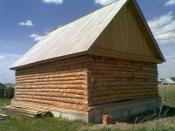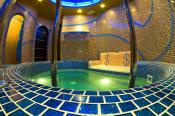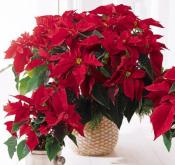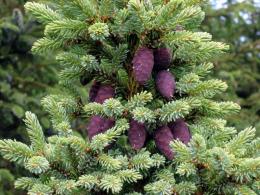Search
Login
Recommended
Conifers in the garden, how to choose the right seedlings, planting place, planting and care
Coniferous plants in the garden perform various functions - decorate the general background of the garden, visually emphasize other plants or serve as hedges. Coniferous shrubs and trees differ in growth rate, height, shape and shade of greenery. Proceeding from this, many questions arise, and the main one is how to choose a coniferous decoration of a garden and grow it without any special difficulties?
Content
- The main differences of conifers
- Species of conifers video
- How and where to buy conifers video
- When to plant conifers
- Planting conifers
- Care video
The main differences of conifers
Conifers are presented in a wide range, plants differ in terms of variety and application in garden design:
- Height - High, Medium, Low
- Shape - spherical, columnar, conical, cylindrical
- Color - green, silver, blue, yellow, orange
- Position - sun, shadow, partial shade
- Cropping - yes / no
Application of conifers:
- Creating Sculptures Using Cropping
- Background for other flowering plants
- Wind protection
- Fencing
- Rock garden decoration
- Growing in containers
Species of conifers
After analyzing the existing plantings in the garden, and taking into account the above criteria, we can become more familiar with the types of conifers and proceed to the purchase of seedlings.
Tall conifers (fir, Serbian spruce, thuja) are suitable for hedges. The average height of conifers (Korean fir Cis, Thuja Bodmeri) will emphasize flowering plants.
Low varieties, they are dwarf conifers for the garden (individual varieties of cypress, creeping juniper), are used in perennial compositions and for decorating large gardens.

Coniferous shrubs of columnar, conical or cylindrical shape will draw attention to the special corners of the garden. If the garden is large, it is permissible to plant conifers of considerable size - Douglas spruce or fir, dwarf varieties are suitable for a small garden, they are universal and available in various shades.
The colors of the needles are diverse, the choice of a particular variety depends on the taste of the gardener and the combination of the color of the coniferous plant with flowering perennials.
Needles of blue and silver color, in some varieties of juniper (Scaly, Creeping, Coastal) and spruce (Sith Papus, Sizaya). The needles of yellow and orange will brightly transform the boring winter landscape, pay attention to the varieties of cypress (blunt Fernspray Gold, Filifera Aurea) and yew berry (Elegantissima, Semperaurea).
As for the position, silver and blue varieties require a lot of sun, dark green needles prefer shade, and light green hot rays, conifers of golden shades - partial shade.
How and where to buy conifers
Plants are purchased from trusted sellers, each plant must have a label with the name of the species and variety, with information about the basic requirements. A healthy tree has a color corresponding to the variety, a straight trunk and branches without damage.
The condition of the roots is important, conifers for the garden in containers better take root, less likely to damage the roots during transportation. If there is such a possibility, before buying, lift the root lump from the container, avoid roots that are closely intertwined in the container.
Inspect plants with open roots for uniformity of processes on all sides. Keep in mind that such plants require careful planting and special care.
When to plant conifers
Conifers in containers are planted throughout the entire warm season, except for the period of frost. Before warmer days, plants in containers can be left up to two weeks after purchase. Coniferous plants with bare roots are planted immediately after purchase - in early spring or autumn, but the best time to plant conifers is the end of summer, from August to September.

Planting conifers
Coniferous plants prefer slightly acidic soil, with the exception of common juniper, Serbian spruce and some species of pine, they are not demanding and grow even on poor soils. Fertile soil for spruce and pine is preferable, proper nutrition will help the plant to take root, increase immunity to diseases and pests.

Prepare a place for planting, dig the soil with compost, garden peat, manure (optional) or use ready-made fertilizer for conifers.
During planting, it is possible to use a hydrogel to retain moisture in the soil. Hedrogel will prevent drying of the soil, it is very convenient during drought and lack of watering.
Before planting, lower the roots of the plant into the water for 10 - 15 minutes, dig a hole 12 cm deep and 12 cm wider than the size of the roots. Damaged rotting roots are trimmed with secateurs, after which the roots are carefully covered with soil and watered abundantly.

Care
Conifers love watering within reasonable limits, otherwise the roots will begin to rot. Correct soil moisture will be supported by mulching (and prevent weeds from growing) In the fall, before the onset of cold weather, conifers are abundantly watered. Conifers do not absorb moisture from frozen soil, but need watering all year round, if the winters are warm, do not forget to water them.

Plant nutrition is carried out with adapted fertilizers from May to July 3-4 times.
Coniferous plants are cut in the spring - dry and damaged shoots are removed. In the case of hedges, pruning also has an aesthetic character - the height is leveled, protruding branches are trimmed. In the summer, hedge pruning is repeated.





